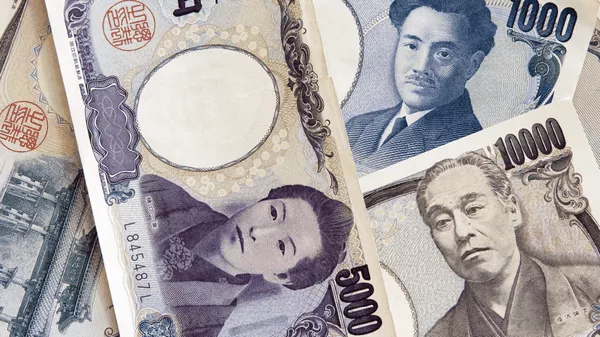The exchange rate between the Japanese yen (JPY) and the US dollar (USD) is closely monitored by investors, economists, and policymakers due to its implications for trade, investment, and monetary policy. In recent times, the Japanese yen has experienced a decline against the US dollar, prompting questions about the underlying factors driving this trend. In this article, we delve into the reasons why the Japanese yen is falling against the US dollar, examining economic fundamentals, market dynamics, and policy developments shaping currency movements.
8 Reasons Why The Yen Is Falling Against The Dollar
1. Economic Context:
A. Japanese Economy:
The Japanese economy, characterized by its export-oriented industries, aging population, and deflationary pressures, has faced challenges in recent years.
Despite efforts to stimulate growth through monetary easing and fiscal stimulus, Japan continues to grapple with structural issues such as sluggish productivity growth and a high debt-to-GDP ratio.
B. US Economy:
The US economy, the world’s largest, has demonstrated resilience amid global uncertainties, supported by robust consumer spending, business investment, and accommodative monetary policy.
Factors such as fiscal stimulus measures, vaccination efforts, and infrastructure spending have contributed to optimism about the US economic outlook.
2. Interest Rate Differentials:
Interest rate differentials play a significant role in driving currency movements, as they influence capital flows and investment decisions.
The US Federal Reserve has signaled a shift towards tightening monetary policy, including potential interest rate hikes, in response to rising inflationary pressures and strong economic growth.
In contrast, the Bank of Japan has maintained an accommodative monetary policy stance, with interest rates near zero and ongoing quantitative easing measures aimed at supporting economic recovery and achieving price stability.
3. Yield Spread Dynamics:
The widening yield spread between US Treasury yields and Japanese government bond (JGB) yields can contribute to downward pressure on the Japanese yen relative to the US dollar.
As US Treasury yields rise in anticipation of tighter monetary policy, attracting capital inflows, the yield advantage of US assets over Japanese assets increases, leading investors to favor the US dollar.
4. Inflation Differentials:
Inflation differentials between the US and Japan can also influence currency movements, as higher inflation expectations in the US relative to Japan may lead to expectations of tighter monetary policy and currency appreciation.
The US Federal Reserve’s commitment to achieving its inflation target of 2% and willingness to tolerate temporary inflation overshoots contrasts with Japan’s persistent deflationary environment and subdued inflationary pressures.
5. Trade Dynamics:
Trade imbalances between the US and Japan can impact currency valuations, with persistent trade deficits or surpluses influencing market perceptions of relative economic strength.
Japan’s trade surplus with the US, driven by exports of automobiles, electronics, and machinery, may lead to increased demand for US dollars to settle trade transactions, contributing to yen depreciation.
6. Safe-Haven Flows:
The US dollar often serves as a safe-haven currency during times of uncertainty and market volatility, attracting capital inflows from investors seeking refuge from geopolitical risks or economic instability.
While the Japanese yen has historically been considered a safe-haven asset, its appeal may diminish relative to the US dollar amid heightened uncertainty and risk aversion.
7. Market Sentiment and Risk Appetite:
Market sentiment and risk appetite can influence currency movements, with shifts in investor sentiment impacting demand for currencies perceived as riskier or safer.
Improving economic prospects in the US, coupled with expectations of monetary policy normalization, may lead investors to favor the US dollar over the Japanese yen, particularly during periods of optimism and risk-taking.
8. Policy Divergence and Expectations:
Divergence in monetary policy stances between the US Federal Reserve and the Bank of Japan can contribute to expectations of currency depreciation for the Japanese yen relative to the US dollar.
Forward guidance from central banks, communication about policy intentions, and market expectations of future interest rate trajectories play a crucial role in shaping currency movements.
See Also: Is a Weak Yen Good for Japan’s Economy?
Conclusion:
The decline of the Japanese yen against the US dollar reflects a combination of factors, including interest rate differentials, yield spread dynamics, inflation differentials, trade dynamics, safe-haven flows, market sentiment, and policy expectations.
Understanding the drivers behind the yen’s depreciation against the dollar is essential for market participants, policymakers, and investors navigating the global currency markets and managing currency risk.


